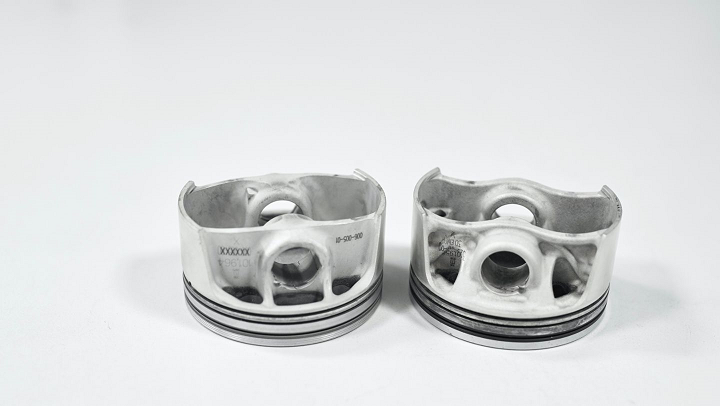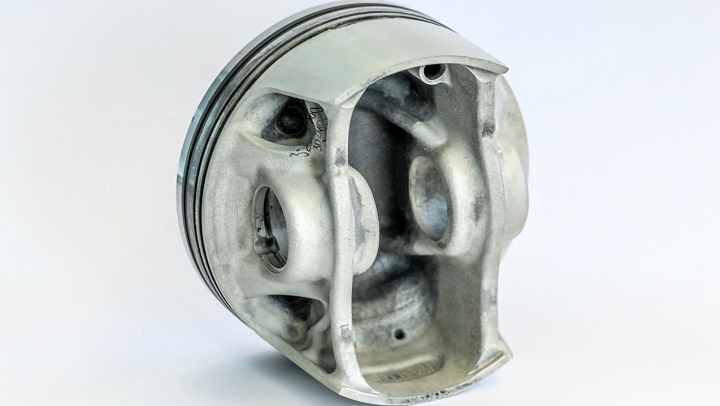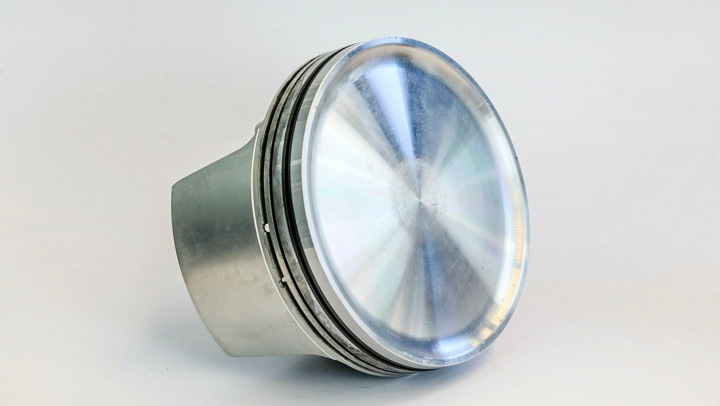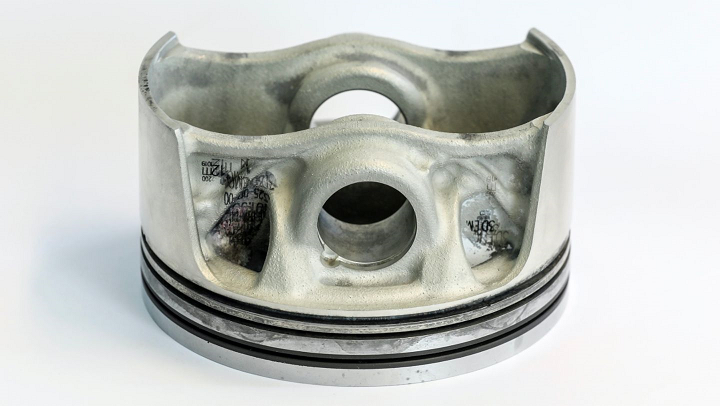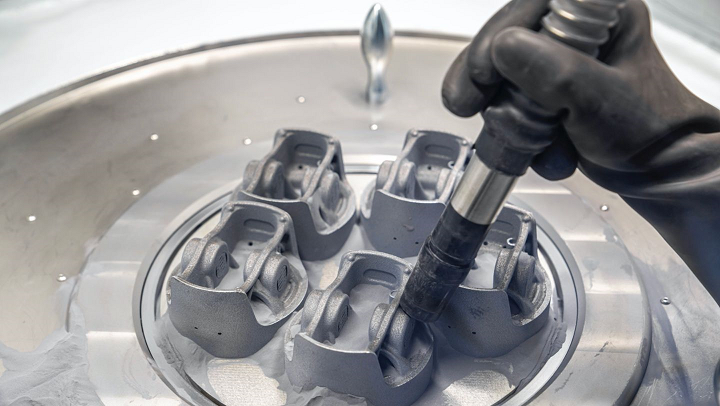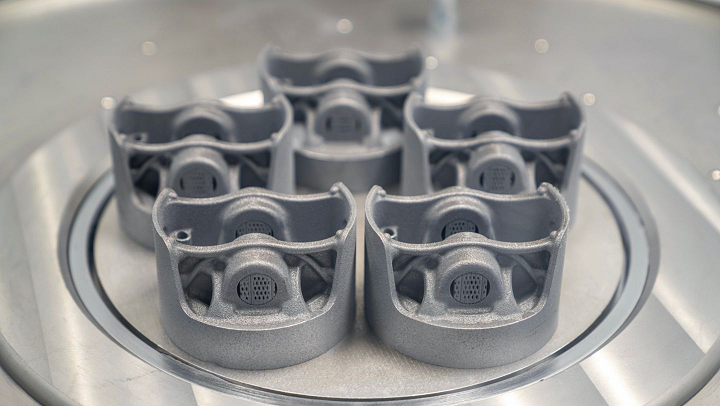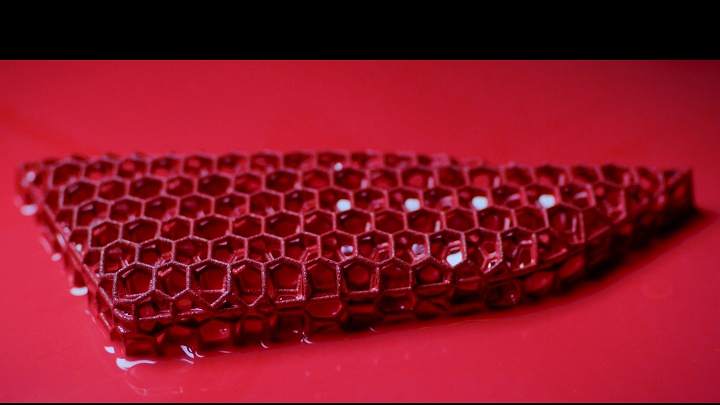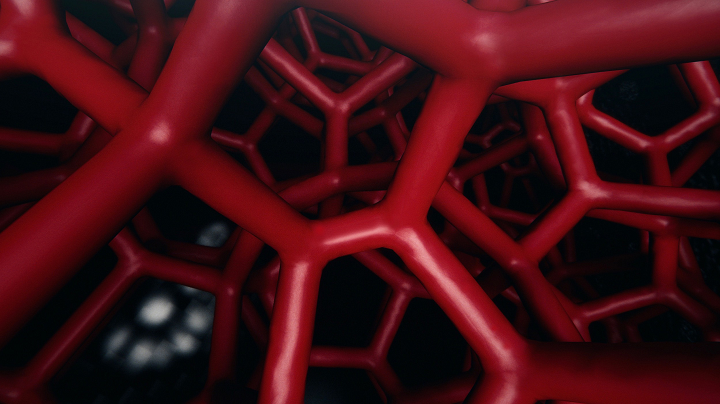3D Printed Car Parts: Porsche Introduce 3D Printed Pistons for GT2 RS
German sports car manufacturer Porsche has been using 3D printing for several years in a variety of applications. For instance, it’s fabricated prototypes with the technology, along with using it to make steel, plastic, and alloy spare parts, such as a clutch release lever for the Porsche 959, that hadn’t been previously available. In spring 2020, the manufacturer introduced a bodyform full bucket seat featuring cushion and backrest surfaces that are partially 3D printed. While it wasn’t considered a production part at the time, the seats, which allow customers to select one of three firmness levels (soft, medium, or hard), are now available for the Porsche model series 911 and 718.
The technology is interesting in both economic and technical terms for Porsche in its motorsports, special, and small series vehicles, and the manufacturer clearly recognizes the potential of 3D printing for giving its customers innovative and customized products. Now, it is increasing the efficiency and power of the high-performance engine pistons for its 911 flagship model, the GT2 RS, by cooperating with two important industry partners to 3D print these high-stress drive components.
Porsche took on this joint project with MAHLE, an international development partner and supplier to the automotive industry, and German family-owned company TRUMPF, which offers both laser metal fusion (LMF) and laser metal deposition (LMD) AM technology. In this case, LMF technology was used to print the pistons out of high-purity metal powder, which MAHLE identified as an aluminum alloy, and the pistons now feature a structure that’s been optimized for the high-stress loads acting on the pistons while driving.
MAHLE explained that bionic design, which only adds material in loaded areas, was used to develop the pistons for the GT2 RS. This technique allowed the partners to waste less material, and make the 3D printed pistons more rigid, and up to 20% more lightweight, than the traditional forged series production pistons.
“This project involved multiple challenges. From the design of the piston through the specification of the material and the development of the appropriate printing parameters, we had to make many fine adjustments to achieve the optimum result. We have now not only mastered the technical side of things, but can also assess how the method can be embedded into existing manufacturing processes,” said Volker Schall, Head of Product Design in Advanced Engineering at MAHLE.
These new pistons also feature an integrated, closed cooling duct, with a special shape, near the piston crown, which would not have been possible to make with traditional manufacturing technologies. The design of the cooling gallery was based on MAHLE’s work with piston thermal processes, and the duct actually optimizes combustion by lowering the temperature load at this part of the piston, which undergoes significant stresses.
Additionally, an extra 3D printed charge air cooler, which optimizes flow control and cooling, was added to an air pipe between the turbo and original cooler. This ensures a much larger heat transfer, lower fuel consumption, and more efficient engine performance.
“Thanks to the new, lighter pistons, we can increase the engine speed, lower the temperature load on the pistons and optimise combustion. This makes it possible to get up to 30 PS more power from the 700 PS biturbo engine, while at the same time improving efficiency,” explained Frank Ickinger, Project Manager, from the advance drive development department at Porsche.
The piston blanks were analyzed at MAHLE, and engineers paid plenty of attention to the piston skirt and the pin bore, which is where it’s connected with the conrod. Then, the components underwent 200 hours of endurance testing to determine performance capability and quality using measurement technology from Zeiss. The results found that the 3D printed piston offers the same high quality as pistons made with conventional manufacturing.
“The project illustrates how 3D printing can be used to further improve components whose performance potential has already been exhausted by decades of development,” stated Steffen Rübling, Project Manager at TRUMPF. “This will benefit many other industries, such as aerospace and energy.”
(Images courtesy of Porsche AG)
The post 3D Printed Car Parts: Porsche Introduce 3D Printed Pistons for GT2 RS appeared first on 3DPrint.com | The Voice of 3D Printing / Additive Manufacturing.
BMW opens new €15 million additive manufacturing campus in Munich to “industrialize 3D printing”
Porsche Creating Partially 3D Printed Seats that Offer Different Levels of Comfort
3D printing is used often in the automotive sector, and many recognizable names, from Volkswagen and BMW to Ford and Toyota, are adopting the technology. German automobile manufacturer Porsche, which specializes in high-performance sports cars, SUVs, and sedans, has turned to 3D printing multiple times in the past to make components for e-drive powertrains and turbo inlet ducts. Now, the company has revealed its latest innovation – 3D printed bodyform bucket seats.
Michael Steiner, a member of the executive board for research and development at Porsche, said, “With the ‘3D-printed bodyform full-bucket seat’, we’re once again giving series-production customers the opportunity to experience technology carried over from motor sports.”
The manufacturer, based in Stuttgart, currently considers the seat a concept study, and not yet a production part. The seat’s central section is partially 3D printed, because the technology will allow Porsche to offer customers an exceptional level of customization – people who order the seat in the future will be able to choose between soft, medium, and hard firmness levels. The central section of the seat will then be custom 3D printed to provide whichever level of comfort they choose.
“The seat is the interface between the human and the vehicle, and is thus important for precise, sporty handling. That’s why personalised seat shells customised for the driver have been standard in race cars for a long time now,” Steiner said.
In the future, the manufacturer plans to bring the 3D printed seats to customers as production parts through Porsche Tequipment. But for now, only 40 of these seats, for the driver only, will be made and installed in the 911s and 718s Porsche racing models; in fact, the new 3D printed bucket seat is based on the company’s current sports seat. These 40 seats will be considered as prototypes, and will only be used on European racetracks this summer with a six-point harness.
Once Porsche receives feedback from the customers, the 3D printed seat will then be included as a regular offering in its Porsche Manufaktur catalogue starting in mid-2021 – if the feedback is good, of course. At that point, Porsche will also offer the seat in a variety of different colors as well.
The base support for the bucket seat is made out of expanded polypropylene (EPP), which is then bonded to the 3D printable, breathable custom comfort layer, featuring an aesthetically pleasing lattice structure. The seat’s final layer is made from a material that Porsche calls Racetex, which has a distinguishing perforation pattern that helps with climate control.
Porsche hopes that in the long run, it will be able to use 3D printing to offer its customers even more customization, such as seats that are designed and molded for a person’s specific body contour and shape, similar to how vehicle seats in motorsports are made for the race car driver.
There isn’t yet a price listed for these customizable 3D printed Porsche seats, but you can bet your bottom dollar that they won’t be cheap; customization rarely is, of course.
What do you think? Discuss this story and other 3D printing topics at 3DPrintBoard.com or share your thoughts in the comments below.
(Sources: Autoblog and MSN / Images: Porsche)
The post Porsche Creating Partially 3D Printed Seats that Offer Different Levels of Comfort appeared first on 3DPrint.com | The Voice of 3D Printing / Additive Manufacturing.
3D Printing News Briefs: April 28, 2019
We’re getting the business out of the way first, then moving on to awards and rewards in this edition of 3D Printing News Briefs. CECIMO has expressed its approval of a new 3D printing nomenclature standard, and there’s a new design competition in town. Weerg announced the winner of its 3D Printing Project Award, and Formlabs is rewarding its loyal customers with a discount. Finally, a 3D printed Harry Potter statue flies high at a store in India.
CECIMO Welcomes New Classification Provision for 3D Printers
 CECIMO, the European Association of the Machine Tool Industries, is glad to hear about the approval and introduction of a new product nomenclature standard, used by over 200 countries, for additive manufacturing systems. The nomenclature, known as Harmonized System and used by authorities to classify goods in international trade, is maintained by the World Customs Organisations (WCO). The classification code was first proposed by the EU on the basis of input from CECIMO, and will improve statistics collection on the international trade of AM machines by material used, in addition to promoting the inclusion of these systems in bilateral or multilateral trade deal talks around the world. The new code will go into use starting January 1, 2022.
CECIMO, the European Association of the Machine Tool Industries, is glad to hear about the approval and introduction of a new product nomenclature standard, used by over 200 countries, for additive manufacturing systems. The nomenclature, known as Harmonized System and used by authorities to classify goods in international trade, is maintained by the World Customs Organisations (WCO). The classification code was first proposed by the EU on the basis of input from CECIMO, and will improve statistics collection on the international trade of AM machines by material used, in addition to promoting the inclusion of these systems in bilateral or multilateral trade deal talks around the world. The new code will go into use starting January 1, 2022.
“Standardization is of vital importance in the industrialization of AM. Work is progressing on standards on materials, processes and applications,” said Filip Geerts, Director General at CECIMO. “In addition to standardization, we are glad to have contributed to the inclusion of AM machines in the systematic list of commodities applied by most trading nations in the world. This action will fill another vacuum in the standards’ landscape, leading to greater official intelligence on AM machine market dynamics and, therefore, helping to draft more accurate strategies for the AM sector.”
Conserv Opened New Design Competition
 Alabama tech startup Conserv, which builds sensor solutions to help places like museums, archives, and libraries preserve cultural heritage, is a big fan of 3D printing and rapid prototyping. Conserv has heard from its customers that they want to “minimize the visual disruption caused by things other than the art in a space,” which is why it’s decided to hold its own 3D design competition to find the next design iteration for its sensor platform. The prize for the winning design, which will be chosen by the startup’s own customers, is $5,000 cash.
Alabama tech startup Conserv, which builds sensor solutions to help places like museums, archives, and libraries preserve cultural heritage, is a big fan of 3D printing and rapid prototyping. Conserv has heard from its customers that they want to “minimize the visual disruption caused by things other than the art in a space,” which is why it’s decided to hold its own 3D design competition to find the next design iteration for its sensor platform. The prize for the winning design, which will be chosen by the startup’s own customers, is $5,000 cash.
“While sensors are necessary to ensure the integrity of a collection, they often look out of place, not in harmony with the carefully curated objects that people come to see,” the competition description states.
“How can we change that? How can we push the art of sensor design further so it looks more like, well, art! What does great look like in this space? How can we design a device that doesn’t look out of place in a gallery curated by the most discerning professionals while still retaining all of the features that fulfill demanding technical requirements? Can we create an object that is unassuming and functional, designed to blend in, but at the same time elicits joy when it is noticed?”
Requirements include that the solution must be designed for wall mounting, with vents for air flow, to blend into a museum environment, and for a high volume manufacturing process, like injection molding. Entrants need to provide a design sketch or rendering and a description of how the design meets the requirements, and a 3D model file for a 3D printed prototype of the device, by May 17th. For other questions and details, email nmcminn@conserv.io.
Winner Announces for Weerg 3D Printing Project Award
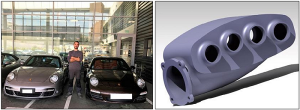 Earlier this month, Italian 3D printing and CNC machining platform Weerg opened the second edition of its 3D Printing Project Award contest, which promotes creativity, experimentation culture, and innovation in design manufacturing. This week, Weerg announced that Benjamin Nenert, a designer and specialized technician for Porsche, is the winner of its 2019 3D Printing Project Award: a €500 Weerg voucher. Nenert, who lives in France, also manages his own vintage Porsche repair and refurbishment business, Ben Auto Design on top of his day job. His award-winning project is a component for a 1983 Porsche engine that he’s currently restoring.
Earlier this month, Italian 3D printing and CNC machining platform Weerg opened the second edition of its 3D Printing Project Award contest, which promotes creativity, experimentation culture, and innovation in design manufacturing. This week, Weerg announced that Benjamin Nenert, a designer and specialized technician for Porsche, is the winner of its 2019 3D Printing Project Award: a €500 Weerg voucher. Nenert, who lives in France, also manages his own vintage Porsche repair and refurbishment business, Ben Auto Design on top of his day job. His award-winning project is a component for a 1983 Porsche engine that he’s currently restoring.
“It is a very important component because it will allow you to extract more power from the engine by converting it to a more modern electronic management system. I could also have tried to modify the original part, but it would have taken a long time, with a very bad result for the performance I was aiming for,” Nenert explained. “The 3D-printed part has all the requirements I was looking for: perfect design, heat resistance up to 100 °C and sturdiness.”
Formlabs Offering Loyalty Discount to Customers
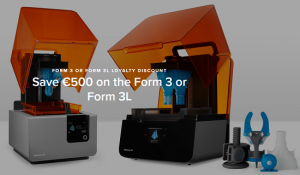 In a very smart move, Formlabs is wisely rewarding its loyal customers with a great discount if they’re interested in upgrading their Form 2 3D printer to the new Form 3 or Form 3L. The company explained that customers simply need to confirm the ownership of their own Form 2 by May 31st, 2019 in order to receive a €500 discount on the purchase of a Form 3 or Form 3L. Then they can add to their fleet of Formlabs systems; again, this is a good choice by Formlabs in order to keep its customers coming back for more.
In a very smart move, Formlabs is wisely rewarding its loyal customers with a great discount if they’re interested in upgrading their Form 2 3D printer to the new Form 3 or Form 3L. The company explained that customers simply need to confirm the ownership of their own Form 2 by May 31st, 2019 in order to receive a €500 discount on the purchase of a Form 3 or Form 3L. Then they can add to their fleet of Formlabs systems; again, this is a good choice by Formlabs in order to keep its customers coming back for more.
To confirm your Form 2 and receive your loyalty discount, share an image of the serial name on the printer’s back panel in the format “AdjectiveAnimal.” You can either get in touch with a member of the company’s sales team, or submit the information online. You’ll either get your unique loyalty discount through an email within one business day, or the sales team will apply it to your purchase. Redeem the discount in the Formlabs online store, or contact the sales team, to buy your discounted Form 3 or Form 3L 3D printer.
STPL 3D Makes 3D Printed Harry Potter Statue
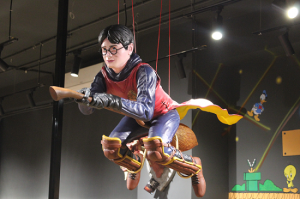 India-based rapid prototyping services company STPL 3D Printing (STPL3D) is continuing with its 3D printed statues of fictional characters. Not long after we heard about the 3D printed Spiderman statue the company made for a customer, another one of its clients requested a 5-foot 3D printed sculpture of Harry Potter for their store. STPL3D had just five days to transform the 2D images it was given into a detailed sculpture, and they got right to work. The company’s in-house designer divided the job into 25 smaller parts that would be easy to print, and once these were completed and post-processed, the team assembled the statue and delivered it to the client’s merchandise store. Using STPL3D’s technology and service, the client had a 40% reduced cost, 70% weight reduction, and saved nearly a month of time on the project.
India-based rapid prototyping services company STPL 3D Printing (STPL3D) is continuing with its 3D printed statues of fictional characters. Not long after we heard about the 3D printed Spiderman statue the company made for a customer, another one of its clients requested a 5-foot 3D printed sculpture of Harry Potter for their store. STPL3D had just five days to transform the 2D images it was given into a detailed sculpture, and they got right to work. The company’s in-house designer divided the job into 25 smaller parts that would be easy to print, and once these were completed and post-processed, the team assembled the statue and delivered it to the client’s merchandise store. Using STPL3D’s technology and service, the client had a 40% reduced cost, 70% weight reduction, and saved nearly a month of time on the project.
“3D printing helps artists transform ideas into tangible works of art. Artists from creative and entertainment domains can truly unleash their imagination to create new and exciting objects. 3D printed art models aims to expand the horizons of design and foster a culture of aesthetic innovation,” said STPL3D’s CEO Rahul Gaywala.
Discuss these stories and other 3D printing topics at 3DPrintBoard.com or share your thoughts in the comments below.
Restoration of Porsche 928 component wins Weerg 2019 3D Printing Project Award
Microsoft, Siemens and Porsche contribute to further $82M funding for Markforged
Christian Thönes, Chairman of the Board at DMG MORI, talks 3D printing at Porsche
3D Printing Industry Review of the Year February 2018
Jay Leno’s Contribution to Auto Part 3D Printing
 It is well known that Jay Leno is an avid car enthusiast and has a world-renowned collection of nearly 300 vehicles. What isn’t as well known is that his team does their own car repair and utilizes 3D printing for replacement parts. It can be difficult and costly finding parts for vintage cars that ended final production many years ago. Most car collectors don’t have enough vehicles to justify experimenting with 3D part design and production. Specialty replacement parts providers are few and far between. Waiting for a few parts can tie up a garage repair bay for a long time. Jay Leno is showing the auto industry how to address these issues with 3D printing. Companies and individuals engaged in the classic car business are eligible for R&D tax credits.
It is well known that Jay Leno is an avid car enthusiast and has a world-renowned collection of nearly 300 vehicles. What isn’t as well known is that his team does their own car repair and utilizes 3D printing for replacement parts. It can be difficult and costly finding parts for vintage cars that ended final production many years ago. Most car collectors don’t have enough vehicles to justify experimenting with 3D part design and production. Specialty replacement parts providers are few and far between. Waiting for a few parts can tie up a garage repair bay for a long time. Jay Leno is showing the auto industry how to address these issues with 3D printing. Companies and individuals engaged in the classic car business are eligible for R&D tax credits.
The Research & Development Tax Credit
Enacted in 1981, the now permanent Federal Research and Development (R&D) Tax Credit allows a credit that typically ranges from 4%-7% of eligible spending for new and improved products and processes. Qualified research must meet the following four criteria:
- Must be technological in nature
- Must be a component of the taxpayer’s business
- Must represent R&D in the experimental sense and generally includes all such costs related to the development or improvement of a product or process
- Must eliminate uncertainty through a process of experimentation that considers one or more alternatives
Eligible costs include US employee wages, cost of supplies consumed in the R&D process, cost of pre-production testing, US contract research expenses, and certain costs associated with developing a patent.
On December 18, 2015, President Obama signed the PATH Act, making the R&D Tax Credit permanent. Beginning in 2016, the R&D credit can be used to offset Alternative Minimum Tax, for companies with revenue below $50MM and for the first time, pre-profitable and pre-revenue startup businesses can obtain up to $250,000 per year in payroll taxes and cash rebates.
The large auto manufacturers and their suppliers have experimented with 3D part design but to date have not yet evolved to volume production. Leno serves as an additional auto parts design incubator and an example the auto industry can learn from.
Other Classic Car Part Designer Examples
Porsche
 Porsche is among the leaders in manufacturing specialized high-performance sports vehicles, and has been doing so for nearly 90 years. Porsche is integrating 3D printing to keep their older model vehicles running and eliminate expensive tooling and storage costs for numerous classic Porsche models. Cars such as the 1986 Porsche 959 where only 292 were built require special parts that do not exist anymore and would take a series of complex tooling to acquire a necessary part. With Porsche’s digital fabrication processes, they can simply scan and print a single part instead of producing numerous small run expensive components that require entire tooling mechanisms. Porsche is currently utilizing 3D printing to print eight other components from plastic or steel and is testing whether 3D printing can be used to reproduce many more components.
Porsche is among the leaders in manufacturing specialized high-performance sports vehicles, and has been doing so for nearly 90 years. Porsche is integrating 3D printing to keep their older model vehicles running and eliminate expensive tooling and storage costs for numerous classic Porsche models. Cars such as the 1986 Porsche 959 where only 292 were built require special parts that do not exist anymore and would take a series of complex tooling to acquire a necessary part. With Porsche’s digital fabrication processes, they can simply scan and print a single part instead of producing numerous small run expensive components that require entire tooling mechanisms. Porsche is currently utilizing 3D printing to print eight other components from plastic or steel and is testing whether 3D printing can be used to reproduce many more components.
Mercedes-Benz
 Mercedes-Benz is a global automobile marquee known for their luxury vehicles and trucks that has been a consistent adopter of the latest technology to improve upon their past, present and future product lines. Mercedes-Benz can essentially print any part for any car they’ve ever built just as long as they have the schematics or part in hand to duplicate it. Customers are closer now to having access to a large catalog of replacement or custom parts that Mercedes can print and ship in a short amount of time. The utilization of 3D printing removes the overhead of machining expensive parts and tools while setting up a market to sell what were once very expensive parts, for a fraction of the cost.
Mercedes-Benz is a global automobile marquee known for their luxury vehicles and trucks that has been a consistent adopter of the latest technology to improve upon their past, present and future product lines. Mercedes-Benz can essentially print any part for any car they’ve ever built just as long as they have the schematics or part in hand to duplicate it. Customers are closer now to having access to a large catalog of replacement or custom parts that Mercedes can print and ship in a short amount of time. The utilization of 3D printing removes the overhead of machining expensive parts and tools while setting up a market to sell what were once very expensive parts, for a fraction of the cost.
Freshmade 3D
 Freshmade 3D in Ohio is a team of highly skilled individuals with extensive experience in additive manufacturing, materials and processes, industrial design and reverse engineering. They strive to provide precious antique and valuable classic car parts that become increasingly difficult to find every day through the use of 3D printing methods, and are poised to lead the industry in serving restoration and custom automotive markets. With few alternatives for finding a classic car replacement part, Freshmade 3D gives enthusiasts a valuable option to use additive manufacturing to engineer quality parts or prototypes that would be much more expensive if the parts were to be machined. Freshmade 3D offers a wide range of materials and small-medium scale manufacturing that will satisfy most car part needs.
Freshmade 3D in Ohio is a team of highly skilled individuals with extensive experience in additive manufacturing, materials and processes, industrial design and reverse engineering. They strive to provide precious antique and valuable classic car parts that become increasingly difficult to find every day through the use of 3D printing methods, and are poised to lead the industry in serving restoration and custom automotive markets. With few alternatives for finding a classic car replacement part, Freshmade 3D gives enthusiasts a valuable option to use additive manufacturing to engineer quality parts or prototypes that would be much more expensive if the parts were to be machined. Freshmade 3D offers a wide range of materials and small-medium scale manufacturing that will satisfy most car part needs.
PartWorks
 PartWorks is a 3D printing and CNC machining company out of Georgia that uses the latest technology to deliver the best manufactured parts for many of the leading industries. PartWorks has become especially adept in the vintage car sector where they are capable of engineering obsolete and custom parts that cannot be found in production today. PartWorks is unique because they utilize precision laser scanners, 3D printers, CNC machining and injection molds/stamps that allow their customers the options of having the part made in house or offering an open format file of a 3D model that can be printed or edited by the customer themselves.
PartWorks is a 3D printing and CNC machining company out of Georgia that uses the latest technology to deliver the best manufactured parts for many of the leading industries. PartWorks has become especially adept in the vintage car sector where they are capable of engineering obsolete and custom parts that cannot be found in production today. PartWorks is unique because they utilize precision laser scanners, 3D printers, CNC machining and injection molds/stamps that allow their customers the options of having the part made in house or offering an open format file of a 3D model that can be printed or edited by the customer themselves.
GRYP
 GRYP is a French startup that is using 3D printing to create classic car parts on-demand in an attempt to reduce restoration costs. Their goal is to allow collectors to restore their vintage cars at a consistent and affordable cost to continue the prestigious heritage of such vehicles. GRYP works with numerous automobile clubs and associations, spare parts distributors, and local 3D printing companies in an attempt to integrate large scale 3D printing not only to the classic car sector but to the automotive industry as a whole.
GRYP is a French startup that is using 3D printing to create classic car parts on-demand in an attempt to reduce restoration costs. Their goal is to allow collectors to restore their vintage cars at a consistent and affordable cost to continue the prestigious heritage of such vehicles. GRYP works with numerous automobile clubs and associations, spare parts distributors, and local 3D printing companies in an attempt to integrate large scale 3D printing not only to the classic car sector but to the automotive industry as a whole.
Conclusion
The world had enjoyed Jay Leno’s humor for many years. Now he’s bringing his expertise and creativity to provide design leadership for the automotive industry while having his own fun. Even though Leno retired from late night public television, he still continues his on-camera appearances with his own YouTube channel called Jay Leno’s Garage, dedicated to 3D printing and cars, and has garnered more than 2 million subscribers as he spreads the benefits of utilizing 3D printing.
Discuss this and other 3D printing topics at 3DPrintBoard.com or share your thoughts below.
Charles Goulding & Ryan Donley of R&D Tax Savers discuss automotive 3D printing.

